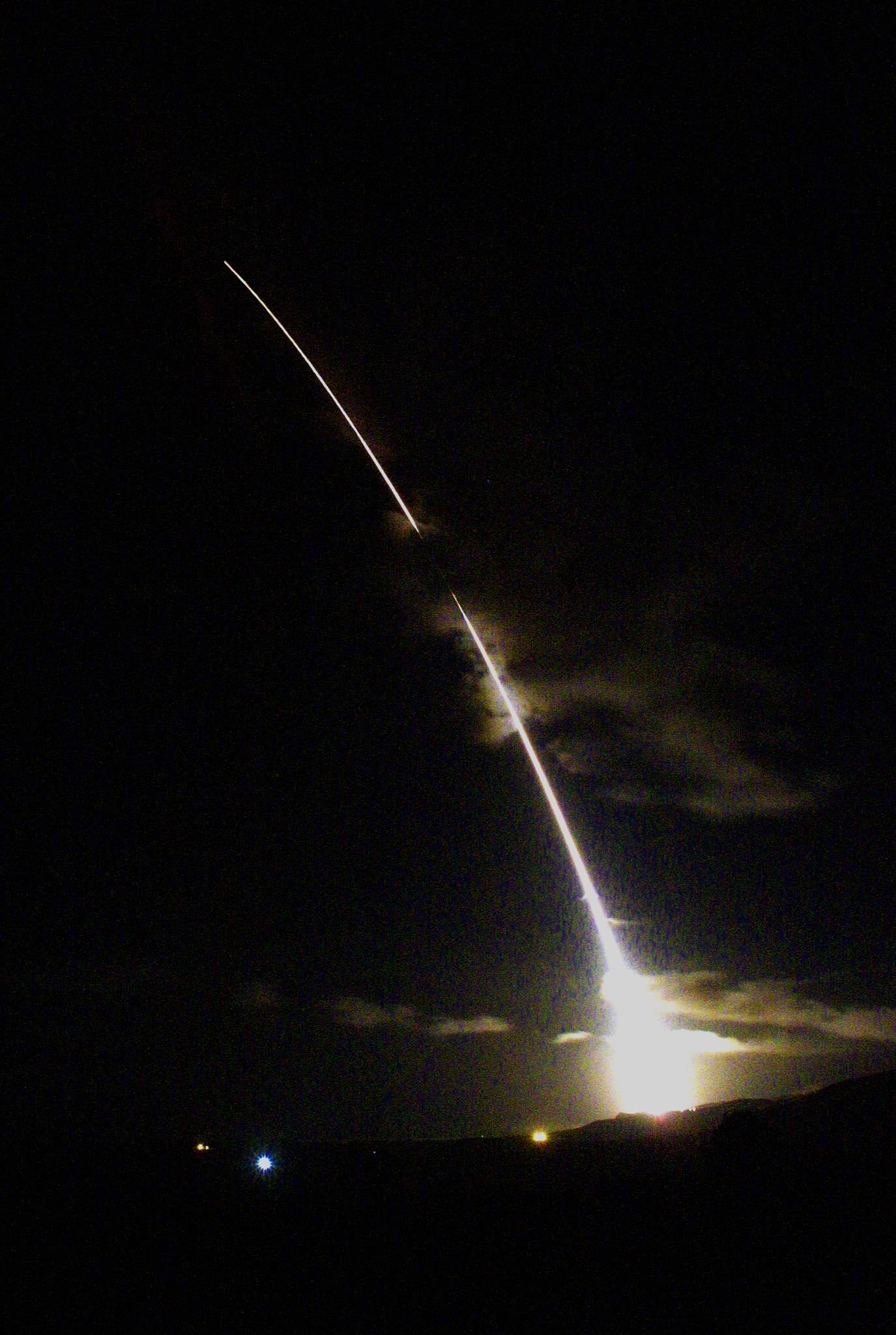WASHINGTON — The Missile Defense Agency's efforts to improve its homeland missile defense system are using risky acquisition practices, according to a Government Accountability Office (GAO) report released Wednesday.
The GAO, as ordered by Congress, evaluated Defense Department reports on how it is improving its Ballistic Missile Defense System, designed to defend the homeland against possible threats from North Korea and Iran.
Though the Pentagon's reports "described the benefits of MDA's ongoing efforts to improve homeland missile defense," the GAO found, "MDA faces risks and challenges pursuing these efforts."
GAO states, for example, MDA has demonstrated "some" capability to defend against ballistic missile threats, "but several other key aspects necessary to prove it can defend the US homeland against the current ballistic missile threat have not been demonstrated."
Some of the capabilities that still need to be demonstrated are intercepting a target representative of an intercontinental ballistic missile and performing a salvo intercept where two or more interceptors are used against a single target, the GAO report notes.
Vice Adm. James Syring, MDA's director, told reporters last week the next intercept test for the the Ground-Based Midcourse Defense (GMD) system's interceptors would be in November 2016 against an ICBM representative threat.
MDA's key improvement plans include beefing up the amount of Ground-Based Interceptors (GBIs) within the GMD system from 30 to 44.
By the end of fiscal 2017 all 44 GBIs will be in place at Fort Greely, Alaska, and Vandenberg Air Force Base, California.
The agency is also investing in a Redesigned Kill Vehicle (RKV) for the GMD system that will increase the performance of the current Exoatmospheric Kill Vehicle, which has struggled in testing. The EKV is a component of the GMD system interceptors designed to destroy targets in high-speed collisions after separating from the booster rocket. The RKV is expected to deploy in the 2020 time frame.
Beyond the RKV, the agency is in the early stages of developing a Multi-Object Kill Vehicle (MOKV) that would enable the GBI's to engage numerous and complex threats earlier in the flight trajectory.
GAO concluded that MDA is "relying on high-risk acquisition practices to achieve its goal of fielding 44 interceptors by the end of 2017," adding the agency's fielding goal is "highly optimistic" and is guided by an "aggressive schedule."
MDA runs the risk of "undue concurrency" meaning it is starting production of its newest interceptors before conducting flight tests to demonstrate the interceptor works as designed, the GAO notes, adding the agency should delay production until after successful flight tests.
GAO recounts a six-and-a-half-year delay in the GMD program previously that came with a cost increase of $1.75 billion because MDA produced the current fleet of interceptors prior to key test events and test failures "exacerbated disruptions to the program."
The MDA also had to design new alternate divert thrusters (ADTs) for the kill vehicle and while that may help the agency meet its fielding goals, GAO said the move "increases the risk for reliability issues going undetected before being delivered to the warfighter."
The alternate divert thrusters were tested successfully in January. But "MDA does not intend to 'hot-fire' each thruster before integration — a test that verifies proper performance and workmanship," GAO writes, and "as a result, the first time the ADT will be fired is in flight."
GAO also predicts MDA will hit snags in its GMD flight test plan and will thus be "reducing the level of knowledge obtained prior to completing fielding."
MDA plans to conduct three GMD flight tests from fiscal year 2016 through fiscal 2017.
Departing from its high-risk strategy with the first GBI interceptors, the MDA's RKV production decisions are aligned with flight tests, which GAO credits as a "positive indication of MDA's intent to improve its acquisition outcomes."
But GAO is still concerned over possible challenges with the RKV's contract strategy, industry collaboration efforts and schedule.
MDA is using a development and sustainment contract rather than conducting a competition for development of the RKV in order to deliver it sooner. Boeing, Raytheon and Lockheed Martin are all a part of an industry team developing the new kill vehicle.
"MDA may experience challenges managing the inter-relationships and fostering an environment that is collaborative amongst contractors who may later compete for the RKV full rate production contract if sufficient safeguards and protocols are not put in place," GAO writes.
The agency also wants to field RKV by 2020, which GAO deems "aggressive" considering it plans to use "less mature technologies that have only been validated in a laboratory or simulated environment."
Additionally, the agency plans to use commercial off-the-shelf components not designed to withstand the harsh environment which kill vehicles operate and may have to work on hardening those components, GAO notes.
Email: jjudson@defensenews.com
Twitter: @JenJudson
Jen Judson is an award-winning journalist covering land warfare for Defense News. She has also worked for Politico and Inside Defense. She holds a Master of Science degree in journalism from Boston University and a Bachelor of Arts degree from Kenyon College.








